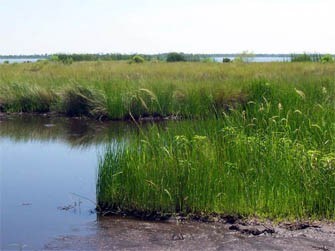Learn about NRCAs
The Natural Resource Condition Assessment (NRCA) Program provides framework, funding, and publishing support to parks to aid in the synthesis and documentation of natural resource conditions. Condition assessment reports are a tool to describe selected park resources, and record a snapshot of their current condition, identify trends, and identify potential or current threats and stressors. Understanding the condition and trend of natural resources is key for parks and NPS planners to appropriately prioritize and allocate stewardship resources.

NPS Photo.
Traditional NRCA Report: 2015
In an effort to better understand the natural resources and processes found within the park, a Natural Resource Condition Assessment was conducted and published in 2015. This assessment was a collaborative effort between the National Park Service and University of Georgia. This team chose 12 natural resource topics to be evaluated:
- Ozone |
- Fish assemblages |
|||||
-Atmospheric deposition |
- Bird assemblages |
|||||
- Weather & climate |
- Mammal assemblages |
|||||
- Geomorphology |
- Hepetofauna |
|||||
- Water quality |
- Terrestrial vegetation |
|||||
- Aquatic vegetation |
- Adjacent land use |
Natural resource conditions at the park varied. Only one topic was considered to be in good condition: herpetofauna assemblages. Six resource topics were considered to be in fair condition: ozone, terrestrial vegetation, aquatic vegetation, fish assemblages, mammal assemblages, and adjacent land use. Three resource topics were considered to be in poor condition: atmospheric deposition, geomorphology, and water quality. The remaining two resource topics (weather & climate and bird assemblages) were not assigned a condition score due to lack of data.
Several threats were identified in the report including atmospheric pollutants, invasive plant and animal species, and adjacent land use. Development adjacent to the park is likely to have strong influences on water and air quality, introduction of invasive species, and may fragment the regional network of protected areas that includes the park.
Several threats were identified in the report including atmospheric pollutants, invasive plant and animal species, and adjacent land use. Development adjacent to the park is likely to have strong influences on water and air quality, introduction of invasive species, and may fragment the regional network of protected areas that includes the park.
For other reports and natural resource datasets visit the NPS Data Store.
Source: NPS DataStore Collection 7765 (results presented are a subset). To search for additional information, visit the NPS DataStore.
Last updated: August 16, 2022
